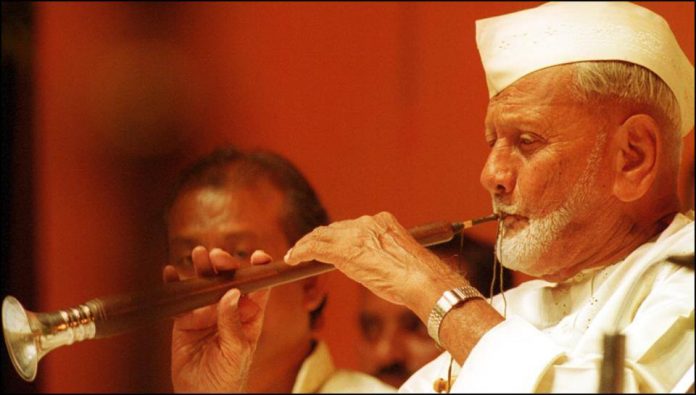- Visitor:108
- Published on: 2025-04-07 03:05 pm
Pathways to Knowledge: India’s Cultural Legacy in China (Part I)
Because of the unique blend and admixture of two ancient civilizations, many of the Hindu Gods became a part of Chinese Buddhist culture. These Hindu-influenced deities are Dàzìzàitiān (Shiva), Dìshìtiān (Indra), Dàfàntiān (Brahma), JíxiángTiānnǚ (Lakshmi), Biàncáitiān (Saraswati), Huanxi Tian (Ganesha), and Yánmóluówáng (Yama). These deities, though originating from Hinduism, were adapted into Chinese Buddhist traditions, demonstrating the deep cultural connections between the two civilizations.

India and China are among the world's oldest continuous civilizations, each with a rich history that has endured through the centuries. Over time, these two civilizations have exchanged ideas, culture, and knowledge, profoundly influencing each other. India's impact on China was particularly significant in the areas of religion, art, and philosophy. This cultural exchange primarily occurred through the Silk Road, which served as a vital link between the East and the West. In the realm of art, Indian temple architecture, sculptures, and paintings greatly influenced Chinese traditions. Many elements of Indian artistic styles were adopted and adapted into Chinese culture, leaving a lasting impact. During the Tang Dynasty, Indian patterns and religious symbols became an integral part of Chinese artistic expression. This fusion created a unique blend of both cultures, reflecting the depth and richness of their cultural interactions.
Indian spiritual and philosophical concepts also found their way into Chinese thought. Ideas such as karma (the law of cause and effect), reincarnation (the cycle of rebirth), and the notion of emptiness (the impermanence of existence) were explored by Chinese scholars and integrated into their philosophical frameworks. These concepts remained relevant in Chinese intellectual traditions for centuries. Additionally, numerous Sanskrit terms, including "Karma" (deeds), "Moksha" (liberation), and "Gyana" (knowledge), were assimilated into the Chinese language, further underscoring India's profound influence on Chinese culture.
Hindu Gods and Goddesses in China
Because of this unique blend and admixture of two ancient civilizations. Many of the Hindu Gods became a part of Chinese Buddhist culture. These Hindu-influenced deities are Dàzìzàitiān (Shiva), Dìshìtiān (Indra), Dàfàntiān (Brahma), JíxiángTiānnǚ (Lakshmi), Biàncáitiān (Saraswati), Huanxi Tian (Ganesha), and Yánmóluówáng (Yama). These deities, though originating from Hinduism, were adapted into Chinese Buddhist traditions, demonstrating the deep cultural connections between the two civilizations. Transcultural exchange in Indian contributions to Chinese culture and society may be mapped up in the words of famous Chinese philosopher Hu Shih: “India conquered and dominated China culturally for twenty centuries without ever sending a single soldier.”
Ashoka and the Rise of Buddhism: A Policy of Peace and Dharma (268-232 BCE)
After embracing Buddhism, Ashoka dedicated himself to spreading the teachings of Buddha far beyond the borders of India. By sending emissaries to various countries and distant lands, he played a crucial role in establishing Buddhism as a widely practiced religion across India and beyond. Due to his efforts, Buddhist teachings reached Central Asia, often referred to as the "Innermost Parts of Asia," and from there, they spread further into China. Ashoka's commitment to promoting Buddhism significantly contributed to its global presence. His legacy left a lasting impact, ensuring that the teachings of Buddha reached even the most remote regions of Asia.
From India to China: The Silk Road’s Role in the Diffusion of Buddhism
The Silk Road played a pivotal role in the spread of Buddhism, marking a significant milestone in its expansion. As the largest trade route, it connected India and China to the West through Central Asia. Buddhist monks and traders traveled along the Silk Road, carrying sacred scriptures, images, manuscripts, and important teachings. Their mission was to introduce Buddhism to new territories, including China. Through their persistent efforts over centuries, Buddhism gradually took root in China. During the Han Dynasty (206 BCE – 220 CE), the teachings of Buddha gained popularity and became an influential religion. Over time, Buddhism shaped Chinese culture, philosophy, and spiritual life, leaving a lasting impact on civilization.
Role of the Han Dynasty in the Dissemination of Buddhism in China
Buddhism first took root in China during the reign of Emperor Ming of the Han Dynasty in 2 BCE when two Indian monks, Dharmaraksa and Kasyapa Matanga, visited China. The emperor welcomed them and, recognizing the significance of their teachings, ordered the construction of China’s first Buddhist monastery, the White Horse Monastery (Baimasi). In the following years, this monastery became a crucial center for the spread of Buddhism throughout China. Inspired by these two monks, many other Buddhist scholars traveled to China over the next several centuries, carrying sacred texts and teachings. They arrived via the Central Asian Silk Road and maritime routes, further deepening the influence of Indian culture on Chinese religion, philosophy, and society through Buddhism.
Buddhism had a profound and lasting impact on Chinese civilization, shaping various aspects of culture and connecting spiritual values with intellectual traditions. One of the most notable Indian influences was on Chinese martial arts, famously known as Kung Fu. In 495 AD, the Indian Buddhist monk Buddhabhadra introduced Kung Fu and helped establish the Shaolin Monastery, where this martial art further developed. Today, Kung Fu is an integral part of Chinese culture and heritage, symbolizing the fusion of Indian and Chinese traditions.
Chinese Pilgrims in India: A Historical Account of Cultural and Religious Exchange
Chinese travelers visited India for various reasons, most notably for religious purposes and the pursuit of knowledge in the land of the Buddha. Their journeys facilitated a rich cultural exchange between India and China. These travelers shared ideas, culture, religious beliefs, intellectual pursuits, and spiritual practices, contributing significantly to the growth and development of both civilizations. Buddhist monks who traveled to India brought back sacred texts and teachings, which they translated into Chinese. These translations played a crucial role in the spread and transformation of Buddhism in China, deeply influencing its spiritual and philosophical traditions.
The Chinese travelers also documented detailed observations of Indian art, architecture, iconography, and stupas. These accounts greatly impacted Chinese architecture, becoming foundational elements in the design of Buddhist temples across China. Here are some famous travellers and their works:
Fa-Hien: The First Chinese Visitor to India (399–412 CE)
Fa-Hien was a Buddhist monk and scholar, recognized as the first Chinese pilgrim to travel to India. His primary motivation was to obtain original Buddhist scriptures and to learn about the life of the Buddha and the teachings of Buddhism directly from authentic Indian sources. During his journey, he documented his experiences in a travelogue titled A Record of Buddhist Kingdoms. He collected numerous Sanskrit texts, translated them into Mandarin (Chinese), and brought them back to China. His efforts played a crucial role in preserving and spreading accurate Buddhist knowledge throughout Chinese society.Hiuen Tsang (also known as Xuanzang): The Second Visitor to India (627-645 CE): He was the second prominent Chinese Buddhist pilgrim and scholar to visit India, making his journey between 627 and 645 CE. His primary motivation was to obtain authentic Buddhist texts and gain a deeper understanding of Buddhism at its source. At the time, many Buddhist scriptures available in China contained errors and inaccuracies due to poor translations. Inspired by the earlier journey and writings of Fa-Hien, Hiuen Tsang resolved to travel to India to study Buddhism directly from its original teachings. His goal was to ensure that the Chinese people had access to accurate and properly translated Buddhist knowledge, drawn from the original Indian sources rather than relying on flawed interpretations.
Yijing (also known as I-Ching): The Third Chinese Visitor to India (671-695 CE): He carefully documented the Buddhist monastic practices of India. His primary motivation for the journey was to study and collect detailed knowledge about these practices. To achieve this, he visited Nalanda University, one of the most renowned centers of Buddhist learning, where he studied Buddhism and its monastic rules and regulations directly from original sources.
Chinese Pilgrims and Scholars: Their Contributions to Cross-Cultural Understanding
One of the key contributions of these Chinese travelers was their study of original Buddhist texts and practices in India. Through their translations, they played a vital role in transmitting this knowledge to China. They translated numerous Sanskrit works into Chinese, ensuring that Chinese Buddhists had access to the profound wisdom of Indian philosophy, religion, and spirituality. In addition to religious texts, these travelers also studied Indian Buddhist monastic traditions and architectural styles. They carried this knowledge back to China, where it greatly influenced Buddhist art, architecture, and iconography. Their detailed descriptions contributed to the construction and design of Buddhist temples and monasteries in China, reflecting strong Indian influences.
Moreover, the accounts of these travelers serve as valuable historical records. Their observations offer historians rich insights into ancient Indian society, covering diverse aspects such as governance, philosophy, religion, economy, and social life. Their work remains an essential source for understanding the religious, cultural, and ethical foundations of ancient India. These contributions left a lasting impact on both Indian and Chinese history and culture.
Indian Influence on China: The Concluding Perspective
In this first part of the series, we examine the systematic patterns through which Indian cultural influence spread to China and how it shaped Chinese civilization. In the next article, we will delve deeper into the specific areas where this influence is evident, including music, art, iconography, the calendar system, medicine, and architecture. Additionally, we will explore the synthesis between the two civilizations, highlighting how Indian values influenced the concepts of Rajdharma, Tao, and Confucian philosophy in China.
- 54 min read
- 0
- 0










